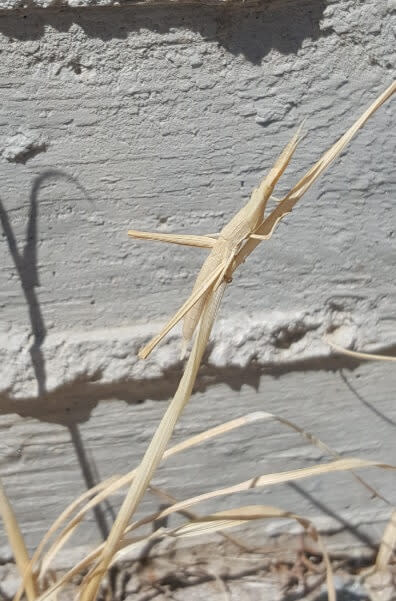Homeowner fascinated by impressively camouflaged creature discovered in their grass: ‘That is so cool!’
Just outside of Athens lives a bug that could give X-Men’s Mystique, a famous shape-shifter, a run for her money when it comes to world-class mimicry.
One Redditor living in Greece shared a picture of a clever straw-colored grasshopper that they found in their yard. The creature was perched on a straw-colored plant and blended in perfectly.
“Just found this bug in my garden,” they posted in the r/whatsthisbug subreddit. “I don’t know (what) it’s called but its similarity to the color of the dry plant impressed me.”

A number of creatures in the animal kingdom don unique camouflage that either helps protect them from predators or helps them sneak up on unassuming prey. This trait helps these species survive and thrive in their environment.
Mimicry is one type of camouflage that is used by a number of insects. Mimics have evolved to look, sound, smell, or even act like something else. Some of these master mimics look like other predators, and others — like this grasshopper — resemble plants or sticks.
Stick bugs are one of the better-known examples of insect mimicry. Their twig-like appearance helps them hide from predators in plain sight.
A dead leaf mantis also uses mimicry, resembling broken and decaying leaves. It even sports leaf patterns on its wings. Not only that, but this mantis could teach a MasterClass in acting — it has learned to mimic the motion of dead leaves and will sway if bothered.
The insect in question in this particular post is probably a Mediterranean slant-faced grasshopper nymph, according to one commenter. However, another person cheekily posited that it was a pterodactyl.
Regardless of the exact species, the community agreed that it was a pretty cool backyard find.
“An impressive mimic!” one person said.
“Wow, I thought I was in r/origami,” someone else chimed in. “What a clever little bug.”
Another commented, “That is so cool!”
Join our free newsletter for easy tips to save more, waste less, and help yourself while helping the planet.
